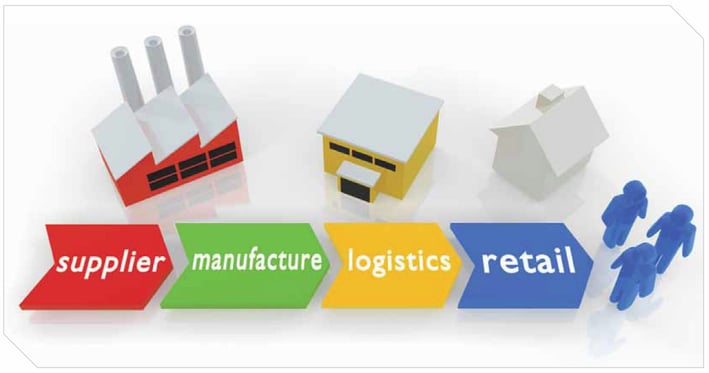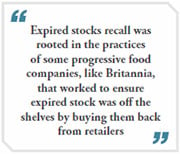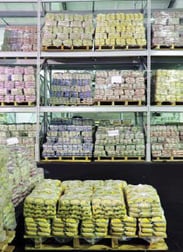Getting it Back
The issue of reverse logistics cannot be ignored in the Indian FMCG industry and will gain importance as the sector itself evolves
With a constant barrage of bad news and no news, we often overlook how the Indian consumption story continues to grow. Note that the BSE FMCG Index today is trading about 24 percent higher than it was one year ago. But it is not just growth that we are witnessing; there Pix: shutterstock.com Getting Back has been a considerable evolution in how companies are interacting with consumers. So, even as companies strain themselves to search out pockets of demand and penetrate underserved markets through increased distribution, they have also been quietly working on the flip side of the problem: How do you get stuff back from the consumer? Reverse logistics was originally the focus of two business pressures: regulation and expired stocks. The former was restricted to a few categories, such as lead acid battery, and manufacturers like Exide, who had to recycle environmentally dangerous materials or safely dispose off used products. Expired stocks recall was rooted in the practices of some progressive food companies, like Britannia, that worked to ensure expired stock was off the shelves by buying them back from retailers. Another, rather unique, requirement that we have all seen over the years has been returnable glass bottles in the beverage industry – despite the onslaught of PET bottles, glass continues to exist in significant volumes and is often the limiting factor for production and sale.

Today, the need for systematic, large scale reverse logistics is triggered by a much wider range of issues. Companies are looking to drive sales and upgradation through exchange offers, encouraging one group of consumers to buy new products and making the used products accessible to a new group of consumers. Product recalls and refits, once unheard of in India, are becoming more common. These are either one-time events or periodic ones, such as during festival sales periods.
However, on a continuous basis, more and more companies are concerned about the systematic collection of damaged and unsold products. Clogged pipelines can have a big impact on lowering retailer interest and lead to discounting with significant brand impact. Increased competition requires companies and retailers to be agile. Anything that slows response to market will have to be addressed. Otherwise, there will be a twin impact – on market share and on profitability.
 Organising for reverse logistics is not simple. Market characteristics, such as long supply chains and a highly fragmented retail environment mean that volumes at each point are low and the condition of returned goods is terrible. It is expensive to audit, given the number of points of collection and expensive to ship back along India’s multi-tier distribution models. Individual companies attempting to do this, despite best intentions, will find it an expensive proposition and that will be a cause of future competitive disadvantage. The market is ready for third-party players to step in, consolidate demand and fill the efficiency gap. As of now, most new players have focussed on the durables and technology (ICT) space. This is partly driven by the higher unit cost of products in these industries and partly by government moves on waste disposal regulation, which is starting with e-waste.
Organising for reverse logistics is not simple. Market characteristics, such as long supply chains and a highly fragmented retail environment mean that volumes at each point are low and the condition of returned goods is terrible. It is expensive to audit, given the number of points of collection and expensive to ship back along India’s multi-tier distribution models. Individual companies attempting to do this, despite best intentions, will find it an expensive proposition and that will be a cause of future competitive disadvantage. The market is ready for third-party players to step in, consolidate demand and fill the efficiency gap. As of now, most new players have focussed on the durables and technology (ICT) space. This is partly driven by the higher unit cost of products in these industries and partly by government moves on waste disposal regulation, which is starting with e-waste.
The issue of reverse logistics, however, cannot be ignored in the Indian FMCG industry and will gain importance as the sector itself evolves. Shortening product life cycles makes it important to keep shelves current for the consumer. Slow moving inventories block retailer working capital. Internet and catalogue sales, with their liberal return policies, make efficient collection vital for profitability, which one assumes they will eventually aim for.
 Reverse logistics companies that can consolidate activity across different manufacturers will make the most economic sense, but building scale and process quality will be the challenge. Currently, India has a highly active system of waste collection and recycling, but since it is based in the unorganised sector control is weak and it is not extracting full value from the product – money is being left on the table.
Reverse logistics companies that can consolidate activity across different manufacturers will make the most economic sense, but building scale and process quality will be the challenge. Currently, India has a highly active system of waste collection and recycling, but since it is based in the unorganised sector control is weak and it is not extracting full value from the product – money is being left on the table.
There will be challenges in implementing a sound third party reverse logistics operation: cross contamination, tax restrictions on the movement and return of material, investments in infrastructure for collection and inspection, assurance and, above all, skilled staff. Reverse logistics will require more judgement calls and more skilled staff than forward distribution.
Again, as with forward distribution, India will need its own unique solutions in the area of reverse logistics. Given the scale, complexity and dispersion involved, it is unlikely to be a single entity that will provide the entire service end-to-end, though that is likely to be the starting pitch that will be used by new entrants to the field. The forward distribution model is already so deep that the scale to be covered is simply too large to take on in full.
So, we are likely to see a mirror image of the forward distribution model that is so hard to bypass – with multiple players involved at different levels and specialising in different aspects of the job: last mile collection, distributed local collection centres (such as our current C&F points), and consolidation, packing and transport to individual manufacturers’ points of disposal. This system will form and evolve and, it is quite possible that it will evolve more quickly than we anticipate. There is a clear need and every day the money left on the table is increasing. Soon the pile will be so large, it will be irresistible – if it isn’t already.
The author is Partner & Managing Director – Indian Operations, CGN & Associates India Pvt Ltd



.png?width=203&name=CGN_Tagline1%20(1).png)